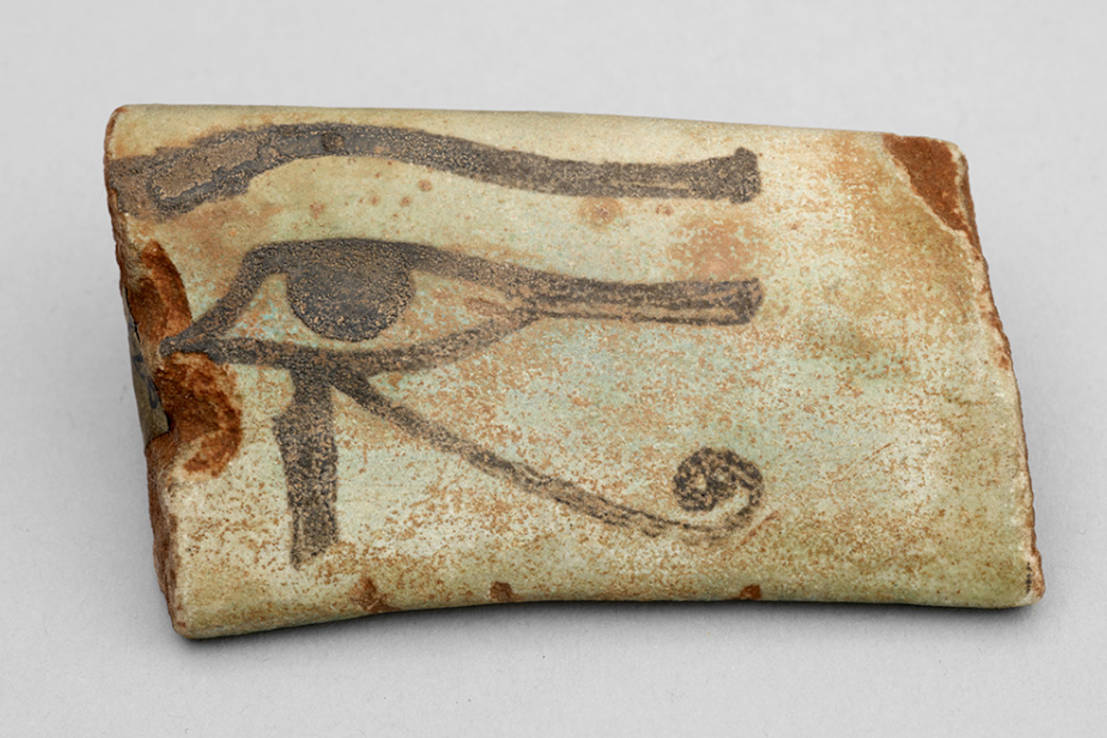
in فارسی / Persian / Farsi translated by Maryam Mobasheri
This object has been translated into 12 different languages by 15 different users
چشم اسب یکی از نمادهای محبوب محافظت در مصر باستان بود. خدای اسب به شکل شاهین نمایان میشود. در اسطورهشناسی مصر باستان، اسب در نبردی با رقیبش ست، که پدر اسب که اوزیریس را کشته بود، چشم خود را از دست داد. بعدها این چشم توسط خدای توث بازسازی شد و به وجات، به معنای کامل یا سالم، تبدیل شد. این نماد به عنوان یک نشان محافظتی، به ویژه برای مردگان، محبوبیت زیادی پیدا کرد و به مدت حدود ۳۰۰۰ سال، از دوره پادشاهی کهن تا دوره روم، استفاده میشد. این نماد همچنین در فرهنگهای همسایه مانند کنعانی، سوری و نوبی نیز به کار میرفت. آیا چیزی دارید که به عنوان نماد خوششانسی یا محافظت نگه دارید؟
Do you have something you’d like to say, in your own language or English, about the object or translation? We’d like to hear what you think.
Translations are community-sourced and for anyone to participate in, however you use your language. For more information, see Community Guidelines.
19 Dec, 2025
Do you have a spam issue on this blog; I also am a blogger, and I was curious about your situation; we have developed some nice methods and we are looking to exchange solutions with others, please shoot me an email if interested.
http://www.vorbelutrioperbir.com
23 Sep, 2023
Italians, especially in southern Italy, are well known for their attachment to superstition. Therefore, it is not surprising that good-luck charms are particularly popular. Arguably, the most popular amulet is the “cornicello” or “cornetto” (meaning “little horn”). The amulet is believed to protect against “malocchio” (“evil eye”), and it is commonly found in the Italian regions of Campania, Lazio, Puglia, and Basilicata.
The cornetto is in the shape of a horn, and it can be made from metal, but it is most commonly red in colour. This makes them look very similar to chilli pepper, but it is meant to represent an eland horn. The cornetto finds its origin in Greek and Roman mythology as it is linked to another common symbol: the cornucopia. The cornucopia, also known as the “horn of plenty” is a symbol of abundance and it is commonly illustrated as a large horn-shaped container overflowing with fruits and flowers. Similarly, the cornetto is also associated with abundance and fertility and remains one of the most common Italian symbols of protection. If you ever go to Naples, you can be certain to see at least one cornetto be worn as jewellery, hung from the rearview mirrors of a car, or kept in a house for decor and good luck.